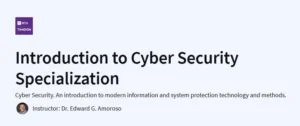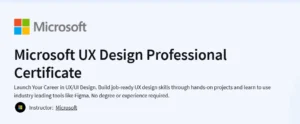What you will learn in introduction-to-software-engineering
Understand the fundamentals of software engineering, including the Software Development Lifecycle (SDLC), Agile and Scrum methodologies.
Gain hands-on experience with programming basics using Python and explore various programming languages.
Learn about software architecture, design patterns, and deployment strategies.
Explore career opportunities in software engineering and understand the skills required for different roles.
Program Overview
Module 1: The Software Development Lifecycle
⏳ 2 hours
Introduction to software engineering concepts, SDLC phases, quality software building, requirements gathering, and software development methodologies.
Module 2: Introduction to Software Development
⏳ 3 hours
Overview of web and cloud development, front-end and back-end technologies, teamwork in software development, and introduction to development tools and software stacks
Module 3: Basics of Programming
⏳ 3 hours
Introduction to programming languages, code organization, programming logic, and hands-on experience with Python programming.
Module 4: Software Architecture, Design, and Patterns
⏳ 3 hours
Understanding software architecture, design processes, UML diagrams, object-oriented analysis and design, architectural patterns, and deployment considerations
Module 5: Job Opportunities and Skillsets in Software Engineering
⏳ 2 hours
Exploration of software engineering roles, required skills, job outlook, and professional ethics in software engineering.
Module 6: Final Quiz and Final Project
⏳ 1 hour
Assessment of knowledge gained throughout the course and a final project analyzing a software engineering job posting.
Get certificate
Job Outlook
Completing this course prepares you for entry-level roles such as Software Engineer, Front-End Developer, Back-End Developer, or DevOps Engineer.
The skills acquired are applicable across various industries that utilize software development practices.
Enhance your employability by gaining practical experience in software engineering fundamentals.
Specification: Introduction to Software Engineering
|
FAQs
- No prior experience is required.
- Basic computer literacy is enough to begin.
- Python programming is introduced step by step.
- Focus is on understanding concepts, not just coding.
- Exercises reinforce practical application gradually.
- Provides foundational knowledge required for entry-level roles.
- Covers SDLC, Agile, Scrum, and software architecture.
- Prepares learners for front-end, back-end, or DevOps positions.
- Teaches professional skills and coding basics.
- Supplementary practice may accelerate career readiness.
- Includes Python programming exercises for practice.
- Students complete a final project analyzing a software job posting.
- Concepts like design patterns and architecture are applied in examples.
- Encourages using development tools and software stacks.
- Real-world scenarios improve job-readiness.
- Covers software engineering fundamentals asked in interviews.
- Introduces coding, SDLC, and Agile methodology concepts.
- Provides understanding of design patterns and architecture.
- Enhances problem-solving and analytical skills.
- Additional interview-specific practice is recommended.
- Deepen Python or other programming language knowledge.
- Explore advanced software design patterns and architectures.
- Learn web frameworks like React, Django, or Spring.
- Study version control systems like Git/GitHub.
- Practice building real-world projects to strengthen your portfolio.





